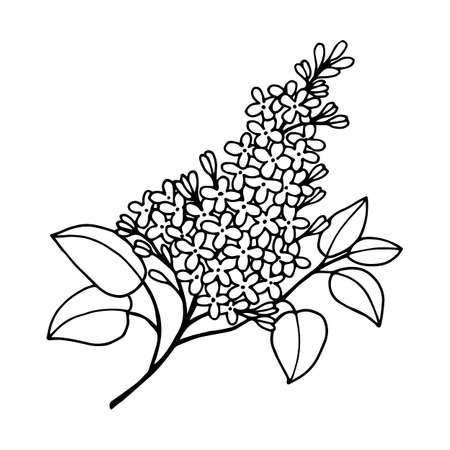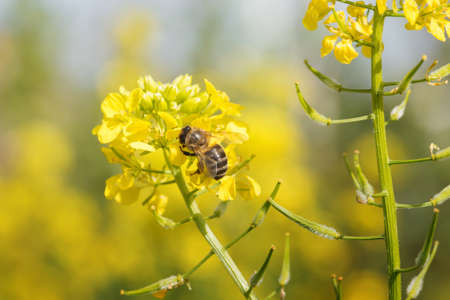The Importance of Pollinators in Permaculture
Pollinators like bees, butterflies, and other beneficial insects are the unsung heroes of permaculture systems across America. These creatures do more than just add beauty to your garden—they are essential for a healthy ecosystem and productive food crops. In fact, about one out of every three bites of food we eat depends on pollination by insects. When you invite pollinators into your permaculture setup, youre not just helping your tomatoes or apples set fruit; youre supporting the entire web of life that makes your garden resilient and self-sustaining. Whether you’re growing veggies in a backyard plot or managing a larger homestead, recognizing the vital role of these insects is key to thriving, regenerative gardening. By working with nature instead of against it, American gardeners can boost yields, improve biodiversity, and build gardens that weather challenges—from pests to unpredictable weather—with greater success.
Native Plants: The Backbone of Pollinator Gardens
When it comes to designing a permaculture garden that truly supports bees, butterflies, and beneficial insects, nothing beats the power of native plants. Native species have evolved over centuries alongside local pollinators, providing exactly what these creatures need in terms of food, shelter, and habitat. By incorporating region-specific native plants into your landscape, you create a resilient ecosystem that requires less maintenance and fewer inputs while maximizing pollinator support.
Why Choose Native Plants?
Native plants are naturally adapted to the soil, climate, and pests of their region. This means they generally require less water, fertilizer, and pesticide use than non-native ornamentals. Most importantly for permaculture enthusiasts, native plants supply the nectar, pollen, and larval host sites crucial for a wide range of pollinators throughout their life cycles.
American Native Plant Examples for Pollinators
| Region | Bee-Friendly Plants | Butterfly Hosts | Beneficial Insect Support |
|---|---|---|---|
| Northeast | New England Aster (Symphyotrichum novae-angliae) Wild Bergamot (Monarda fistulosa) |
Milkweed (Asclepias syriaca) Golden Alexander (Zizia aurea) |
Yarrow (Achillea millefolium) Black-eyed Susan (Rudbeckia hirta) |
| Southeast | Coneflower (Echinacea purpurea) Coreopsis (Coreopsis lanceolata) |
Pawpaw (Asimina triloba) Passionflower (Passiflora incarnata) |
Baptisia (Baptisia australis) Joe Pye Weed (Eutrochium purpureum) |
| Midwest/Great Plains | Purple Prairie Clover (Dalea purpurea) Blazing Star (Liatris spicata) |
Coneflower (Echinacea angustifolia) Prairie Dropseed (Sporobolus heterolepis) |
Goldenrod (Solidago spp.) Leadplant (Amorpha canescens) |
| West/California | California Poppy (Eschscholzia californica) Ceanothus (Ceanothus spp.) |
Narrowleaf Milkweed (Asclepias fascicularis) Buckwheat (Eriogonum spp.) |
Coyote Mint (Monardella villosa) Manzanita (Arctostaphylos spp.) |
A Practical Approach to Plant Selection and Layout
Selecting a diverse mix of native plants with overlapping bloom times ensures a consistent food source from early spring through late fall. Grouping several individuals of each species together (rather than scattering them singly) makes it easier for pollinators to forage efficiently. When possible, layer plantings vertically with groundcovers, perennials, shrubs, and small trees—this increases habitat complexity and attracts a broader spectrum of beneficial insects. Finally, avoid pesticides and leave some natural debris for nesting sites; healthy soil and undisturbed areas further enhance your garden’s value as a pollinator haven.

3. Creating Habitat: Shelter and Water Solutions
For pollinators to truly thrive in your permaculture garden, they need more than just food—they also require safe places to nest, overwinter, and access to fresh water. By integrating practical habitat features, you can turn your landscape into a year-round sanctuary for bees, butterflies, and other beneficial insects.
Nesting Sites: Building Bee Hotels and More
Native bees, unlike honeybees, often nest in small cavities or underground. You can easily support them by installing bee hotels—bundles of hollow stems (like bamboo or reed), drilled wood blocks, or pre-made structures mounted in a sunny, sheltered spot. Make sure your bee hotel is at least three feet off the ground and faces southeast for morning warmth. Avoid using treated wood or plastic; natural materials are best. For ground-nesting bees, leave small patches of bare soil undisturbed and free from mulch or landscape fabric.
Overwintering Spots: Let Nature Be Messy
Many pollinators need safe spaces to hunker down during colder months. Resist the urge to clean up every bit of plant debris in the fall—leave some standing stalks, leaf litter, and brush piles around your garden’s edge. These areas provide cozy hiding places for butterflies like swallowtails and beneficial insects such as ladybugs or lacewings. Rotting logs or rock piles tucked away in quiet corners also create valuable microhabitats.
Water Sources: Butterfly Puddling Stations & Bee Baths
Pollinators need fresh water but can struggle to find safe drinking spots in manicured yards. Create shallow butterfly puddling stations using a dish filled with moist sand and a few flat rocks for perching; keep it wet during dry spells. For bees, try a bee bath: fill a shallow birdbath or saucer with clean water and add pebbles so bees can land safely without drowning. Place these water sources near flowering plants but out of direct traffic to minimize disturbance.
Local Know-How: Keeping It Sustainable
Remember, American pollinator species have different needs depending on your region—from bumblebees in the Northeast to monarchs crossing the Midwest. Check with local extension offices or native plant societies for tips on attracting species native to your area. By combining nesting sites, overwintering shelters, and reliable water sources, you’ll make your backyard an essential stopover for pollinators—and enjoy healthier harvests as a result.
4. Pesticide-Free Practices and Organic Approaches
Reducing the use of synthetic chemicals is crucial for supporting pollinators like bees, butterflies, and beneficial insects in any American permaculture garden. Many conventional pesticides not only kill pests but also harm non-target species, disrupting the balance of your local ecosystem. Instead, focus on organic and natural methods that are both effective against pests and safe for pollinators.
Why Go Pesticide-Free?
Pollinators are highly sensitive to chemical residues commonly found in synthetic pesticides. Exposure can impair their ability to forage, navigate, or even survive. By adopting pesticide-free practices, you create a safer environment for these essential creatures while maintaining soil health and biodiversity.
Organic Alternatives to Common Garden Chemicals
| Chemical Problem | Organic Alternative |
|---|---|
| Aphids | Neem oil spray, insecticidal soap, introducing ladybugs |
| Fungal diseases | Baking soda solution, compost tea, sulfur dust (use sparingly) |
| Caterpillars | Bacillus thuringiensis (Bt) used selectively at dusk when bees aren’t active |
Pest Management Without Harming Pollinators
- Encourage Natural Predators: Attract birds, predatory wasps, and spiders by planting diverse species and providing habitat structures like brush piles or small water features.
- Companion Planting: Use plants such as marigolds, basil, or nasturtiums to repel specific pests naturally while attracting pollinators.
- Physical Barriers: Floating row covers and netting can keep out unwanted insects without affecting pollinator access if removed during bloom periods.
Timing Matters
If you must use any organic sprays, apply them early in the morning or late in the evening when bees and butterflies are less active. Always avoid spraying open flowers where pollinators are likely to land.
Cultivating a Balanced Ecosystem
Permaculture thrives on diversity. By reducing chemicals and relying on nature’s own checks and balances—like mixed plantings, healthy soil life, and beneficial insects—you’ll foster a resilient garden where pollinators can flourish year after year.
5. Succession Planting and Year-Round Blooms
If you want your permaculture garden to be a true haven for pollinators, succession planting is a game changer. By carefully selecting and arranging plants that flower at different times, you can ensure bees, butterflies, and beneficial insects have access to nectar and pollen from early spring through late fall. This not only boosts pollinator activity but also increases the diversity of species visiting your landscape.
Start Early: Spring Forage
Kick off the season with hardy blooms that wake up with the first warm days. Native wildflowers like Lupinus (lupine), Claytonia virginica (spring beauty), and flowering shrubs such as serviceberry and redbud provide crucial food when pollinators emerge hungry from winter dormancy.
Sustain the Buzz: Summer Color & Diversity
As temperatures rise, switch gears with a mix of annuals, perennials, and herbs. Sunflowers, coneflowers, bee balm, black-eyed Susans, and milkweed keep butterflies and bees fueled through the hot months. Interplanting herbs like oregano, thyme, and basil draws in native bees while providing fresh flavors for your kitchen.
Fall Finale: Late-Season Resources
Don’t let your garden fizzle out after summer! Goldenrod, asters, sedum, and native salvias extend blooms into autumn. These late-season flowers are essential for pollinators preparing for migration or overwintering. Remember to leave some spent blooms and standing stems over winter—they provide shelter for beneficial insects until spring returns.
Practical Tips for Succession Planting
– Mix plant heights and bloom times within beds.
– Prioritize native species—they co-evolved with local pollinators.
– Stagger sowing dates for annual flowers.
– Keep records of what blooms when each year—adjust your selections as needed.
– Mulch paths but leave soil bare around plant bases so ground-nesting bees can dig in.
With smart planning, your permaculture plot can offer a continuous feast for pollinators all year long—supporting healthy ecosystems and abundant harvests in your own backyard.
6. Community Connections: Supporting Pollinators Beyond the Backyard
Permaculture doesn’t stop at the garden gate—it thrives when communities come together. To truly support bees, butterflies, and beneficial insects, look for ways to connect your efforts with those of your neighbors and local organizations.
Get Involved with Local Conservation Efforts
Check out native plant societies, conservation groups, or environmental nonprofits in your area. Many host workshops, restoration projects, and educational events that focus on pollinator habitat. By volunteering or participating in these activities, you’ll help expand pollinator corridors beyond private yards and create a more resilient ecosystem across neighborhoods.
Join Pollinator Counts and Citizen Science
Participating in pollinator counts—like the annual Great Sunflower Project or Monarch Watch—lets you contribute valuable data while learning more about local insect populations. These programs often provide simple training and resources for all ages, making it easy to get started whether you’re a seasoned gardener or just curious about pollinators. Your observations help scientists track trends and advocate for better protection policies.
Connect Through Community Gardens
Community gardens are natural hubs for permaculture principles. They not only offer shared space to grow food but also serve as demonstration sites for pollinator-friendly practices like planting diverse flowering borders, installing bee hotels, or reducing pesticide use. Joining a community garden network can amplify your impact by building habitat corridors that link multiple gardens, parks, schools, and even roadside plantings throughout town.
Raise Awareness and Share Knowledge
Don’t underestimate the power of conversation. Host a pollinator walk in your neighborhood, share seeds or cuttings of native plants, or invite friends to a garden workday focused on supporting beneficial insects. Schools and youth groups are often eager for hands-on projects that teach stewardship and ecological literacy. The more people understand how vital pollinators are—and how easy it is to help them—the stronger our collective impact becomes.
Together, We Make a Difference
By stepping outside our own yards and working together, we can weave a patchwork of pollinator habitats that stretches across backyards, vacant lots, schoolyards, and city parks. Community-driven permaculture not only benefits bees and butterflies but also strengthens social bonds and fosters a deeper connection to the land we share.


